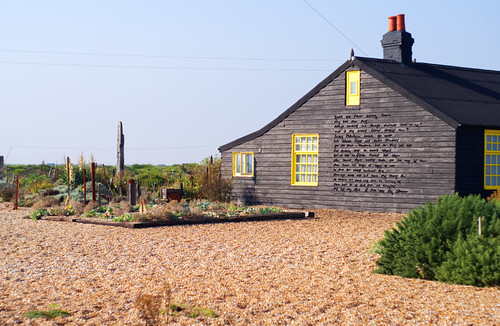This February, we celebrate LGBT+ identities and how they have helped shape our world. Throughout the month we will be posting histories of LGBT+ people who have made contributions to the field of botany, horticulture, garden design and botanical art. If you would like to see the original posts about the individuals below, please check out @BotanicsPride on Twitter. If you’re interested in helping out as we start to plan for Pride 2021, we would be delighted to hear from you! Please contact the Botanics RBGE Pride group for more info. Happy #LGBTHistoryMonth
Derek Jarman…
lived from 1942-1994 and was a film director, gay rights activist and gardener. As an acclaimed cinematographer, his films were made in his own iconic style and drew heavily upon his experiences as a gay man living during a time of turbulent political and social upheaval. Derek used his platform in the industry to campaign against Section 28.
In 1986, he was diagnosed as HIV+. He bought and moved to Prospect Cottage in Dungeness, Kent near a nuclear power station. A keen gardener since childhood, he cultivated a garden on the stark grounds using driftwood sculptures and hardy, wild plants that could tolerate the coastal conditions. When he first arrived at Dungeness, he didn’t even consider building a garden in such a bleak environment writing that, ‘it looked impossible: shingle with no soil supported a sparse vegetation’. But as he started to incorporate flint from the beach in to a rockery, he began to find purpose and beauty in building a resilient garden; noting that he ‘saw it as a therapy and a pharmacopoeia’.
He went on to write Derek Jarman’s Garden about the evolution of the garden and used it for the backdrop for his arthouse film The Garden. In the later stages of his life, he became partially blind and only able to see in shades of blue. A month after his final film Blue’s premiere, he died from AIDS-related complications. Derek’s garden at Prospect Cottage still remains a huge part of his defiant legacy. His partner continued to weed the grasses from time to time until his own death and an appeal in 2020 saved it as an artistic site.

